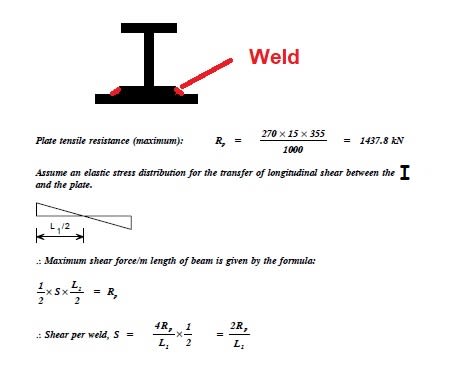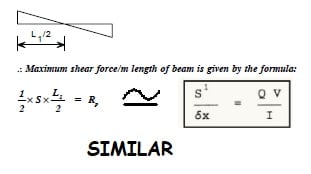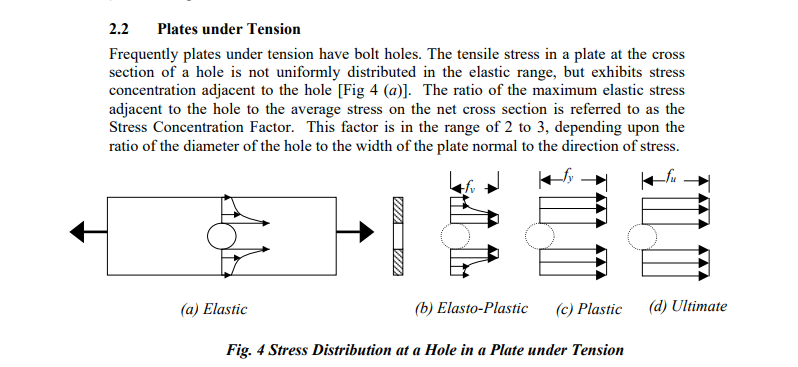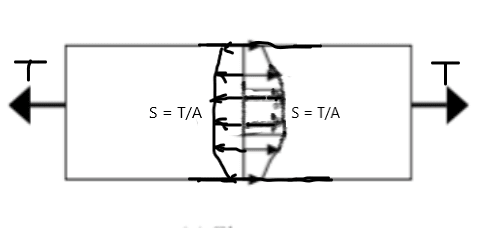JPMF said:
I don't understand when you say,
" The average is Fmax/(L/2) = 2Fmax/L. The maximum longitudinal shear in the welds is 4Fmax/L at the support varying linearly to 0 at midspan."
Any other way to explain this please?
I'll try, because I believe it is an important concept to grasp.
F
max occurs at midspan because M
max occurs at midspan (assuming uniform load on a simple span). M follows a parabolic curve. So does F because F = M*k where k is a constant.
How does Fmax get into the plate? It must be by longitudinal shear in the weld between support and midspan. Suppose (incorrectly) that weld shear is constant from end to midspan, say c (#/" or N/mm). Then c*L/2 = F
max or c = 2*F
max/L. That means c would be the average shear per unit length.
At x=L/4, the weld has developed only c*L/4 which is only F
max/2. That's not enough because F in the plate at x = L/4 is F
max*3/4 (ordinate of parabola). The weld needs to develop more shear near the support and less near midspan.
Near the support, moment is growing rapidly as x increases. At midspan, the curve is level which means moment is not changing with change in x. If moment is not changing, there is no need for a weld.
I hope that helps, but we can look at a different loading condition if you wish. What we have been talking about to date is uniform load on a simple span.
Please let me know if the above is clear.
BA






